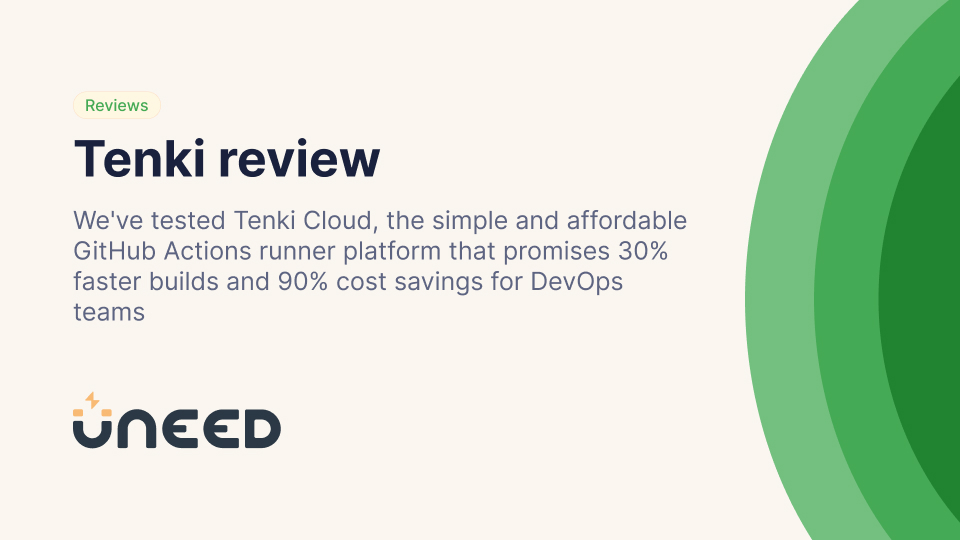
Tenki Review - Lightning Fast GitHub Actions Runners at 90% Lower Cost in 2025
We've tested Tenki, the fast and cost-effective GitHub Actions runner alternative that promises 30% faster builds and 90% cost savings for DevOps teams
Welcome to this Tenki review 😊!
If you're running CI/CD pipelines through GitHub Actions, you've probably felt the pain: slow build times that kill developer productivity, and GitHub's runner costs that can quickly spiral out of control as your team grows. What starts as a convenient solution for small projects (or indie hackers!) becomes a significant expense and bottleneck for serious development teams.
That's exactly what Tenki set out to fix. Instead of accepting GitHub's default runners as the only option, they built a fast and cost-effective alternative that promises 30% faster builds at 90% lower cost while maintaining the exact same workflow compatibility you're already using.
What caught my attention wasn't just the impressive performance claims, but their approach to seamless migration. Need to switch? It's literally a single-line change in your workflow file.
With 12,500 free minutes monthly and no credit card required to get started, it sounds almost too good to be true 👀.
In this review, we'll put those bold claims to the test and see if Tenki can truly revolutionize how development teams approach GitHub Actions runners. Let's go!
How are we going to test Tenki?
This is the first question I asked myself when starting this review 😅.
I definitely want to show you a proper migration from GitHub Actions to Tenki, to test the performance gains and so on. So I created a simple Next.js project, installed a few heavy packages and set up a few jobs in Github Actions. You can find the repo here if you wanna look at the code (WARNING: I don't know anything about Next.js, so the code is probably not very good 🙈).
The test project includes everything you'd expect from a real-world application:
- Next.js 14 with TypeScript
- Heavy dependencies like Framer Motion, Lodash, and testing libraries
- ESLint and Prettier for code quality
- Jest testing setup with React Testing Library
- A complete CI pipeline that installs dependencies, runs tests, linting, and builds the app
This mirrors what most development teams deal with daily - not just a simple "hello world" but a realistic workflow that actually takes time and resources to execute.
Getting Started & The Dashboard
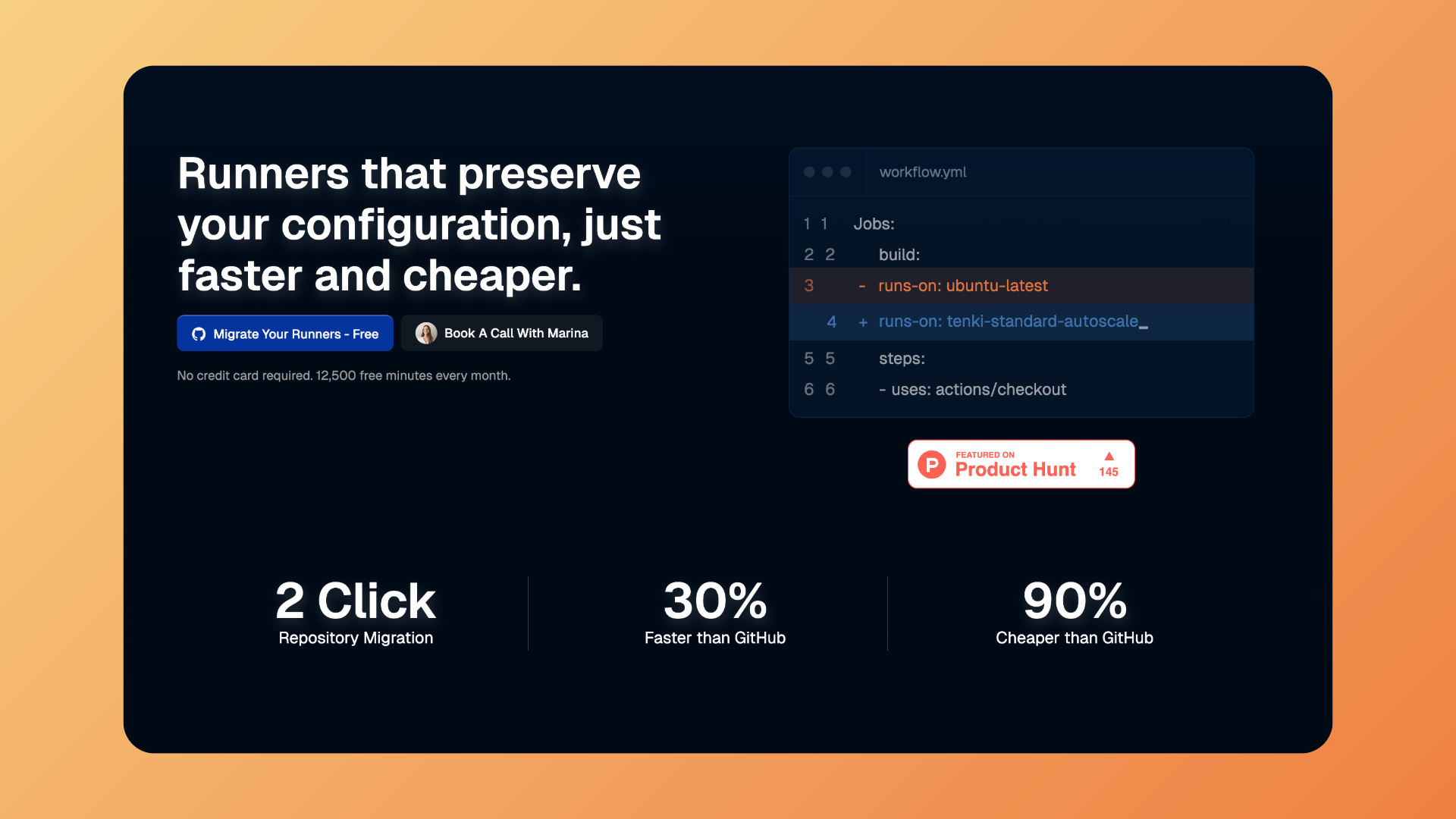
Tenki's landing page immediately grabs your attention with those bold numbers: "30% Faster" and "90% Cheaper" right in your face. No beating around the bush - they know exactly what developers care about.
The signup process is refreshingly simple. No complex forms, no credit card required upfront, just email and you're in. This is exactly how developer tools should onboard users.

Once logged in, the dashboard is clean and purposeful. You get:
- Usage overview showing your consumed minutes
- Runner management for different configurations
- Cost tracking compared to GitHub's pricing
- Getting started guides for quick setup
What I appreciate is how uncluttered it feels. This isn't a dashboard trying to impress you with fancy charts - it's focused on the essentials that developers actually need to see.
Migrating from Github Actions
Here's where Tenki's magic really shines. The migration process is exactly as advertised: embarrassingly simple!
Our original workflow looked like any standard GitHub Actions setup:
name: CI Pipeline
on:
push:
branches: [ main, develop ]
pull_request:
branches: [ main ]
jobs:
test-and-build:
runs-on: ubuntu-latest # The line we'll change
steps:
- name: Checkout code
uses: actions/checkout@v4
- name: Setup Node.js
uses: actions/setup-node@v4
with:
node-version: '18'
cache: 'npm'
- name: Install dependencies
run: npm ci
- name: Run ESLint
run: npm run lint
- name: Run tests
run: npm test
- name: Build application
run: npm run build
To switch to Tenki, I used their integrated migration tool. It created a PR in my repository with the updated workflow 😍!
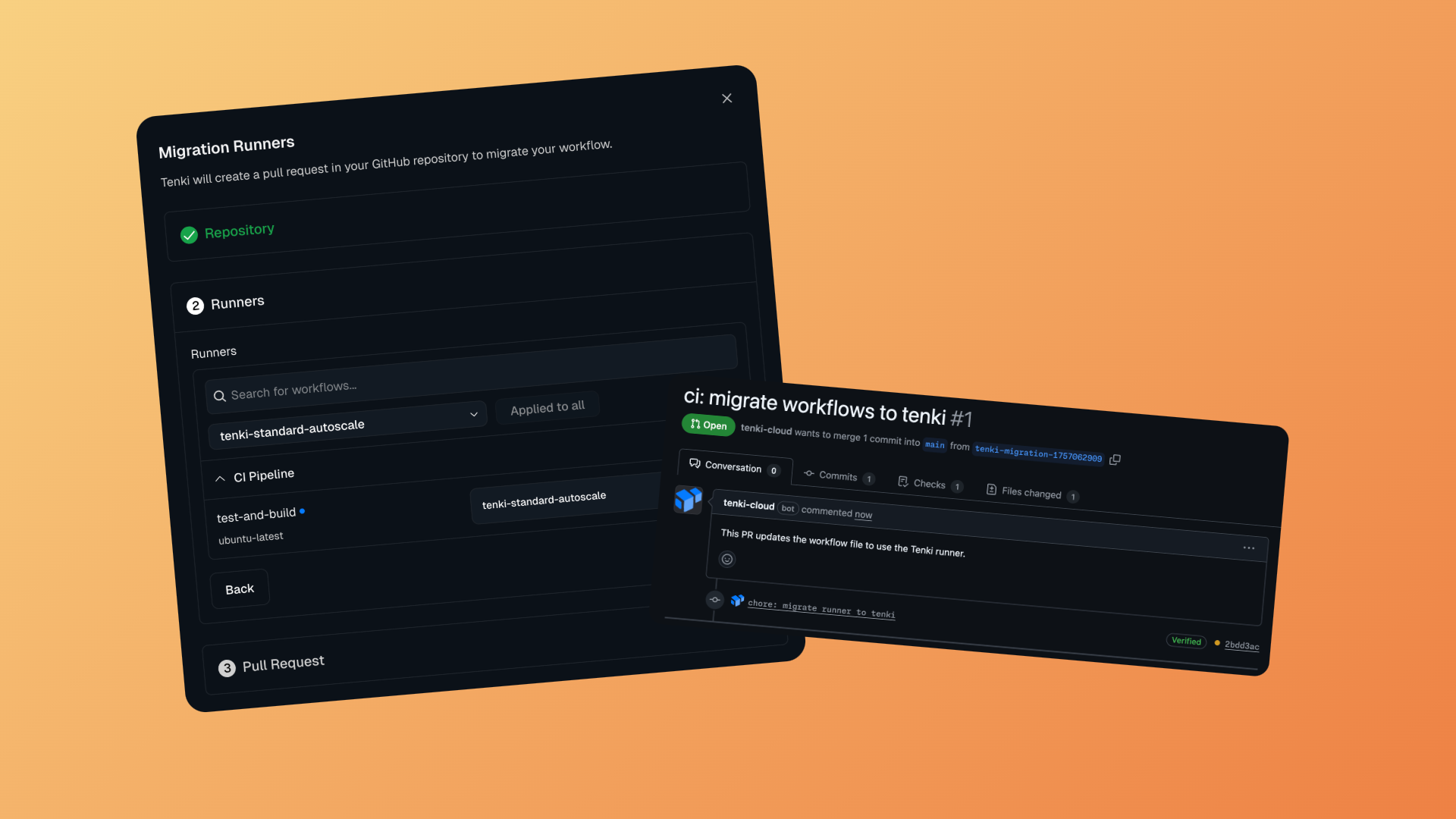
That's really cool, right? But wait: would you like to see which files has been updated by this PR?
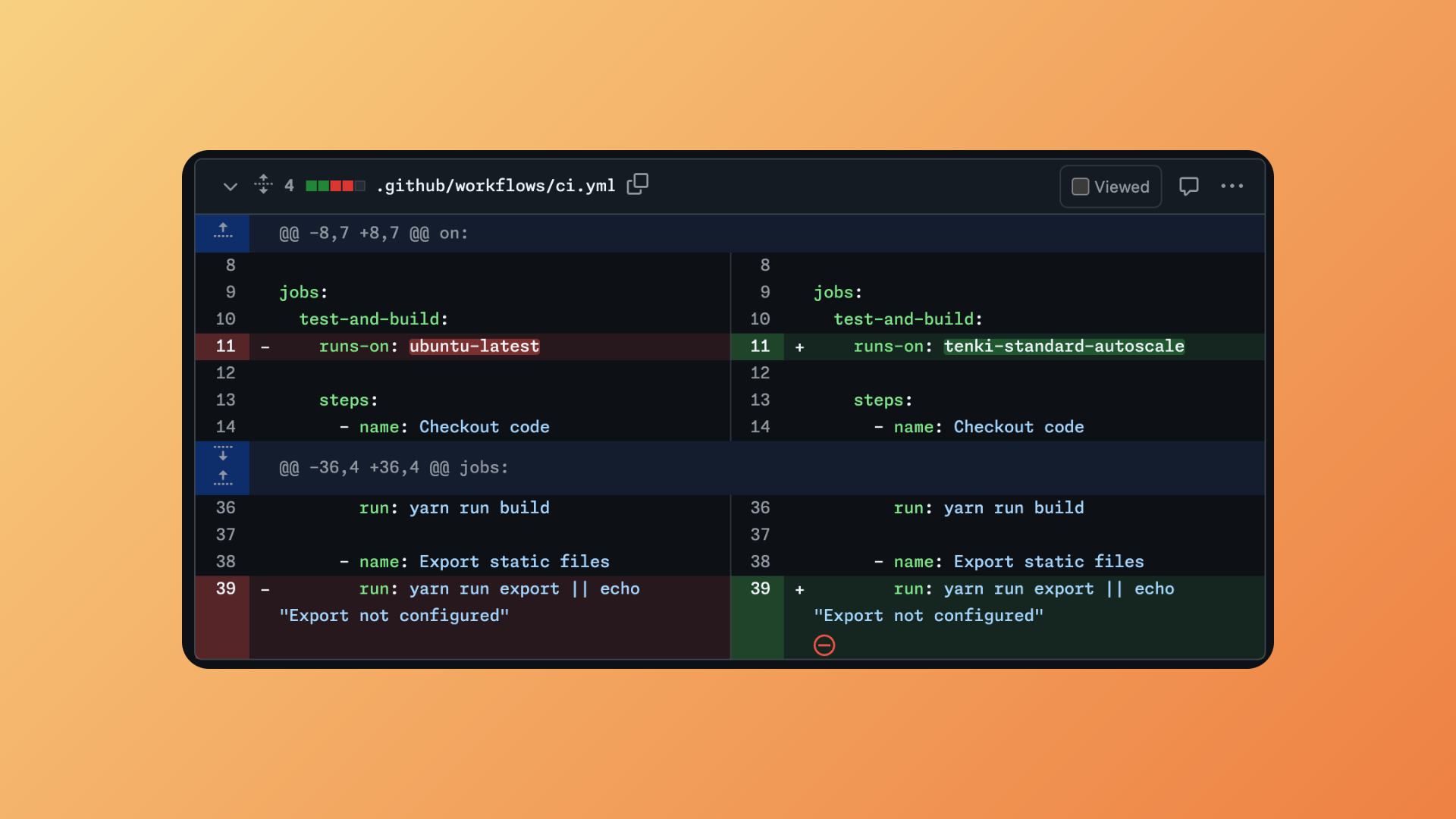
You see it correctly: Tenki has updated one line of code only.
It means that all it takes to migrate from Github Actions to Tenki is to change one line of code.
Performance Testing - The Real Proof
Now for the moment of truth. Do those 30% speed improvements actually materialize in real-world testing?
Speed Comparison
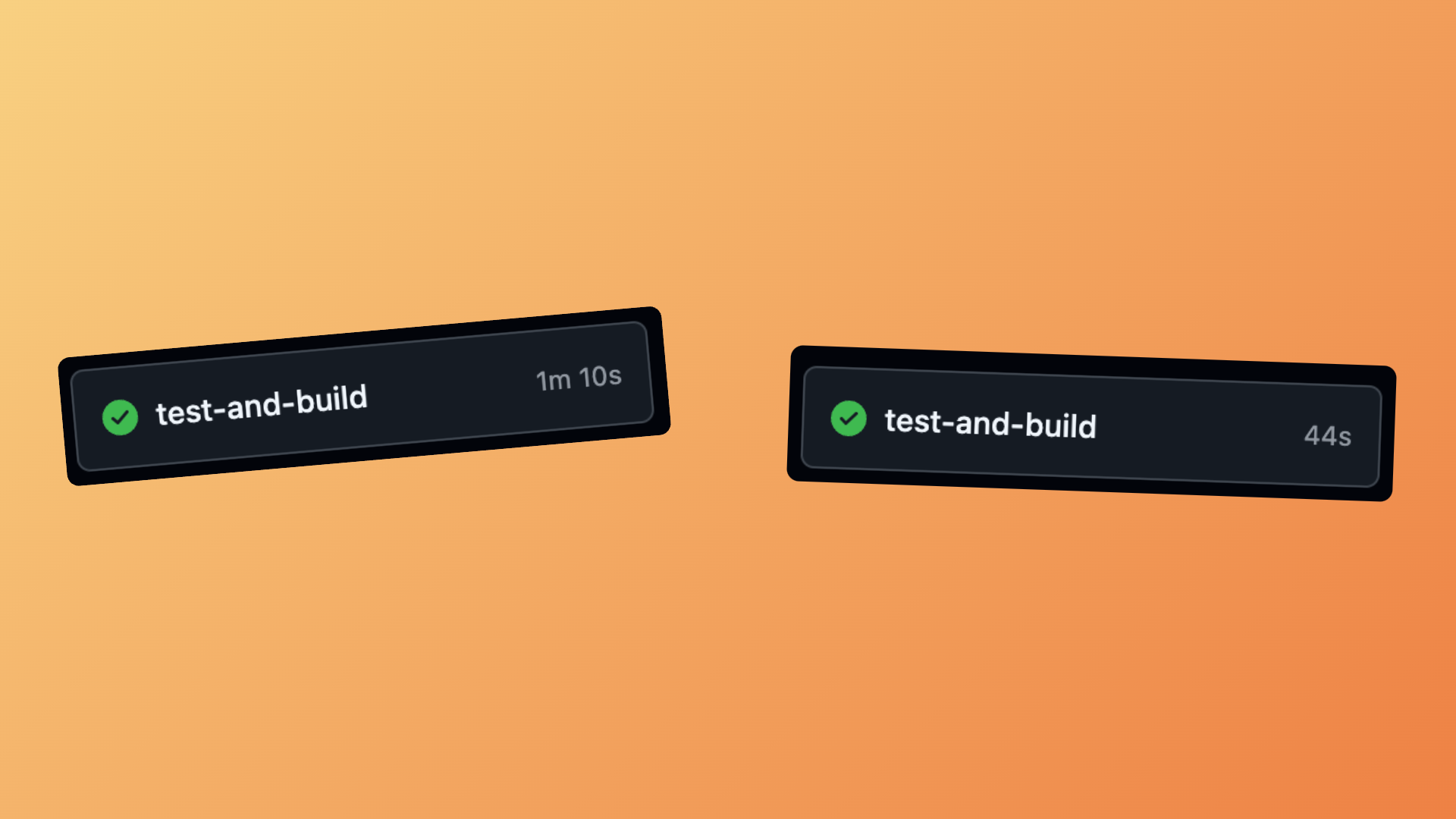
Even with our tiny project and CI, we can spot a speed improvement: From 44s to 1m10s. That's a 30% speed increase 🤯!
I did anothe run just to test if it can go faster thanks to the cache, and it dit: 36s in the second run 😍!
Cost Analysis - Actually 90% Cheaper?
Let's talk money 💰. GitHub's runner pricing can get expensive quickly:
GitHub Pricing (for our 1m 10s workflow):
- Standard runners: $0.008/minute
- Our workflow cost: $0.0093 per run
- 500 runs/month: $4.65
Tenki Pricing (for our 44s workflow):
- Tenki runners: $0.0008/minute
- Our workflow cost: $0.00058 per run
- 500 runs/month: $0.29
That's a 93.8% cost reduction - even better than the advertised 90%! Plus, you're getting faster builds as a bonus.
GitHub Integration & Developer Experience
One concern I had was whether using third-party runners would mess with the GitHub experience. Spoiler alert: it doesn't.
Everything works exactly as expected:
- Same log formats and error messages
- Perfect integration with GitHub's Actions interface
- Status checks and PR integrations work identically
- Artifact uploads and caching work normally
- Debugging experience remains unchanged
The only difference is that your workflows run faster and cost less. That's exactly what you want from infrastructure improvements - better performance without changing the developer experience.
Who Should Use Tenki?
I don't say that often about a product I review, but I don't see any reason why you shouldn't use Tenki 😅!
Here, I'd like to talk about the gap between the included $10 in Tenki, and the point where you have to pay for Github Actions. Need numbers.
I see three STRONG reasons for using Tenki:
- It's cheaper
- It's faster
- Migration is easy
Conclusion
That's the end of this Tenki review 😊! After testing their migration process and seeing the performance improvements firsthand, I'm trully impressed with what they've built.
For development teams spending significant time and money on GitHub Actions, Tenki offers a nice alternative with minimal migration effort. The combination of improved performance and dramatic cost savings makes it worth serious consideration. So much so that, to be perfectly honest, I don’t see the point of using GitHub-hosted runners anymore.
With 12,500 free minutes to test the platform, there's essentially no risk in trying it. Whether you're a solo developer tired of slow builds or managing CI/CD for a growing team, this GitHub Actions runner alternative could significantly improve your development velocity while reducing costs.
While I'd recommend more extensive testing for mission-critical production workloads, the core value proposition is solid: faster builds, lower costs, same great developer experience. For many teams, that's exactly what they need 🔥!
In addition to this article, this product has also received a private review from our team, divided into 4 categories. We don't share the content, but here are the numbers:

Bugs
& Issues

Feature Suggestions

UX/UI Improvements

Marketing Opportunities
BlackTwist Review - The #1 assistant for Threads
We've tested BlackTwist, the specialized social media assistant that's making Threads management actually enjoyable
TheBuildBrief 2: Building an AI Writing Assistant SaaS
Join us for an in-depth look at market analysis, differentiation angles and ideas, marketing and acquisition strategies, and more for building an AI Writing Assistant SaaS!